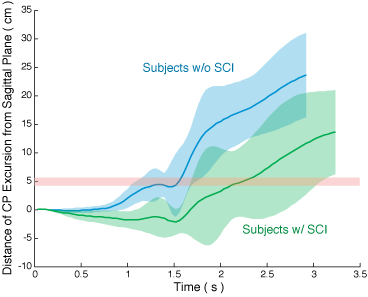Static biomechanical modeling has revealed that human reaching and object movement capabilities are dependent on both torso and upper extremity muscle strengths, and the ability to maintain balance throughout the movement. This paper describes data and biomechanical models that can be used to understand the dynamic motions of people with and without thoracic level spinal cord injuries (SCIs) while moving objects around in their environments. This paper also discusses how data gathered in the Human Motion Simulation (HUMOSIM) Laboratory from volunteer subjects performing various seated tasks are used in multi-joint inverse biomechanical models to predict both shoulder moments and body center of pressure locations. The results demonstrate that when symptomatic control subjects moved a box from a small table in front of them to a shoulder-high shelf, it was performed in a smooth fashion that could be well modeled and understood with the use of sequential static biomechanical models. The motions of those subjects with thoracic and high lumbar level SCIs, however, contained an additional dynamic component. The dynamic component revealed that healthy, active SCI subjects were quite capable of extending the distance over which they can move objects to rigid shelves by using a ballistic motion technique. This dynamic motion allows them to move objects to shelves located over twice the distance predicted by static models of such motions, but also raises questions of safety due to falling forward if the object being moved does not land securely on the shelf. These types of motions also are shown to cause much higher (by about 30%) shoulder moments, thus raising the risk of injury to shoulder tissues in people with SCIs.

